Building a Sapa, Vietnam itinerary is not the easiest! You will understand why when you arrive at Sapa, Vietnam. Sapa, Vietnam is one of the best areas in North Vietnam to enjoy the rice paddy terraces and cool weather.
Sapa, Vietnam is located 317 km (197 miles) northwest of Hanoi. Whether you are looking to pursue your hiking adventure, relax after continuously travelling over the past few months or are there to visit Sapa, Vietnam, there is something for everyone!
While there is much feedback on how touristic Sapa, Vietnam is, I’ll share the best places I thoroughly enjoyed during my 5-day stay. There, tourists are at the minimum. I had seen only a handful throughout my stay.
Included in this Sapa, Vietnam itinerary is an approximate time duration that it will take. So, pick and choose your favourites, as I help you co-build an exciting Sapa, Vietnam itinerary of yours!

Morning view from my homestay in Ta Van
DISCLOSURE
Some of the links here are affiliate links and I may earn if you click on them, AT NO EXTRA cost to you. I hope you find the information here useful! Thanks.
Sapa, Vietnam Itinerary: How many days in Sapa, Vietnam?
There is no one fixed answer. The number of days you spend depends on what is your intention of visiting Sapa, Vietnam. I’ll advise you to give yourself at least two full days in Sapa, Vietnam.
A good two full days will allow you to soak in the Sapa, Vietnam city vibes and explore the area before heading back to town.
I stayed in Sapa, Vietnam for 5 days. I’ll share what I did and my favourites that left me staying longer than expected!
Sapa, Vietnam Itinerary: How to get to Sapa, Vietnam?
There are 3 ways to get to Sapa, Vietnam.
1. Sleeper bus
Taking the sleeper bus is the most popular and common option to get to Sapa, Vietnam. Buses to and from Sapa, Vietnam are plentiful. Hence, you need not book your ticket so much in advance.
This is a great plus point as this will mean that you can decide and tweak your itinerary while you are there!
Buses to/ from Hanoi to Sapa, Vietnam cost ~300k VND (USD 12) and take 6 hours.
After my 3 great days exploring the different areas on the Ha Giang Loop map, I took the sleeper bus directly from Ha Giang. The bus ticket cost ~300k VND (USD 12) and it took 6 hours. I took the bus during the day as I foresaw the winding roads with less visibility since I was in the mountainous region.
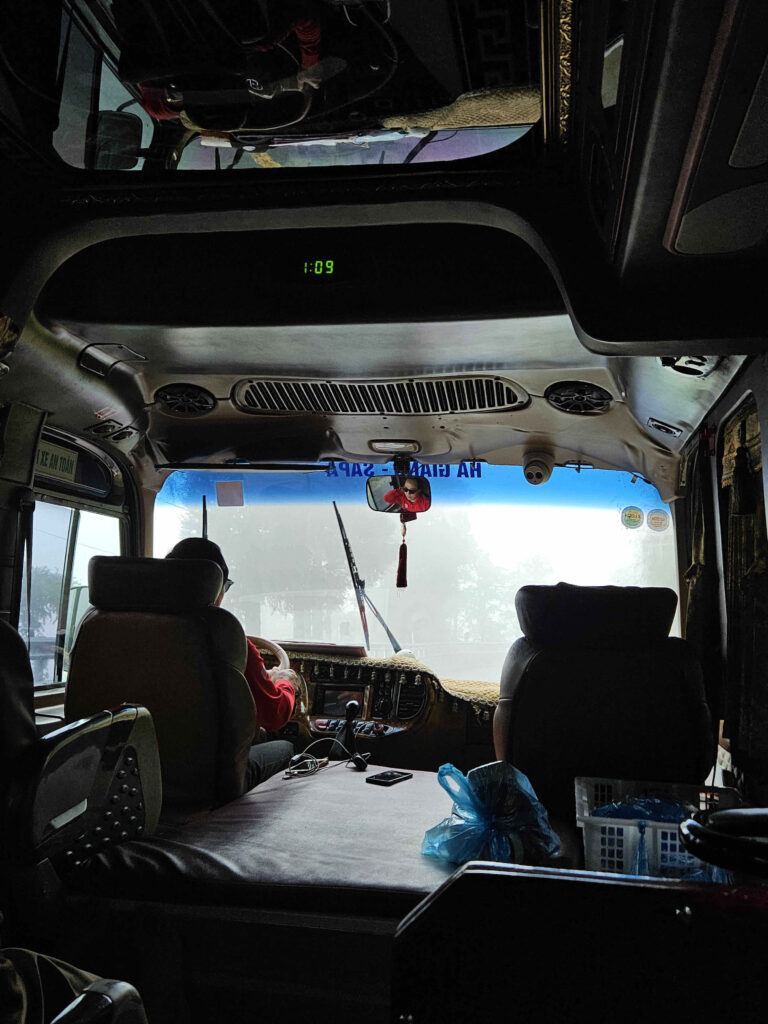
Only minivans were available from Ha Giang to Sapa as the roads were very narrow and even during the day, the visibility was poor
2. Train
The train is an alternative cheap option. Trains from Hanoi arrive at Lao Cai, located 29km (18 miles) from Sapa, Vietnam. The train journey takes ~9 hours. Once you arrive at Lao Cai, the best way to get to Sapa, Vietnam is by taxi. A train ticket costs you 1.1mil VND (USD 40) and a taxi costs you at least 92k VND (USD 4).
The train journey is not convenient. Thus, I’ll not recommend it.
3. Private hire
The most convenient option, but the most costly. Enough said.
Sapa, Vietnam Itinerary: When to go?
The best time to realise your Sapa, Vietnam itinerary is from September to October. During this period, there is a higher likelihood for you to enjoy the best view of the green rice paddy with clear, blue skies in the background.
Alternatively, if you are keen to enjoy your Sapa, Vietnam itinerary earlier, plan to go in April and May. You will still be able to enjoy the cool weather with clear skies.
I went in November. During the 5 days of my Sapa, Vietnam itinerary, I had the privilege of a clear, blue sky on my last day there. So, I decided to hike Mount Fansipan!
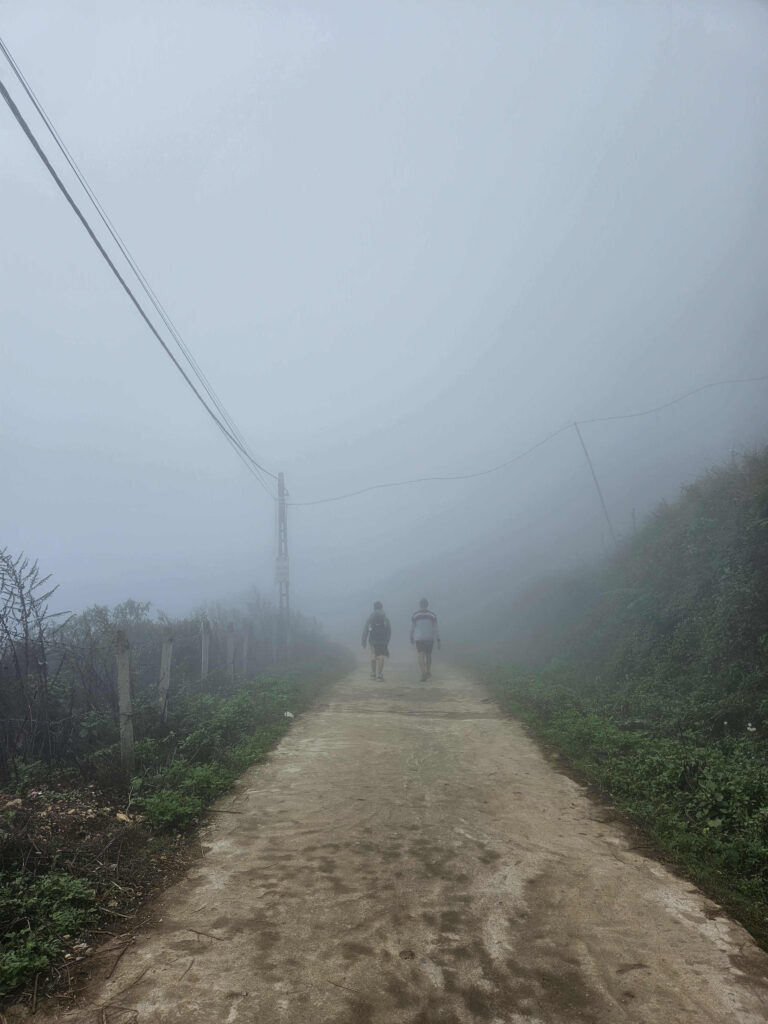
Cloudy skies but that had not stopped my friends and I to explore one of the treks in Ta Van
Sapa, Vietnam Itinerary: 6 things not to miss in Sapa, Vietnam
1. A local, traditional Hmong dinner
The local cuisine at Sapa, Vietnam is one of the key contributing factors that led me to stay longer. The dinner spread at one of the Hmong homestays in Ta Van always left me feeling satisfied after dinner.
I enjoyed the local dinner. A local, traditional dinner consists of steamed rice, fresh stir-fried vegetables, tofu, meat, spring rolls, egg and soup.
As part of the experience, head over to one of the Hmong guesthouses. Don’t be shy to ask if they serve a local dinner. They are incredibly friendly! I enjoyed many great local dinners throughout my time exploring the Ha Giang Loop map and in Sapa, Vietnam.

A local Hmong dinner consisting of a variety of stir-fried meat, egg, tofu and vegetable soup with steamed rice
2. A trek through the rice paddy terraces
Trekking through the rice paddy terrace is a must-do! Even if you are not athletic, a short 1-hour trek through the rice paddy terrace will give you a great experience. The view is amazing, even with significant fog!
There are many trekking options, depending on your fitness level, sense of adventure and interest to check out the local Hmong villages.
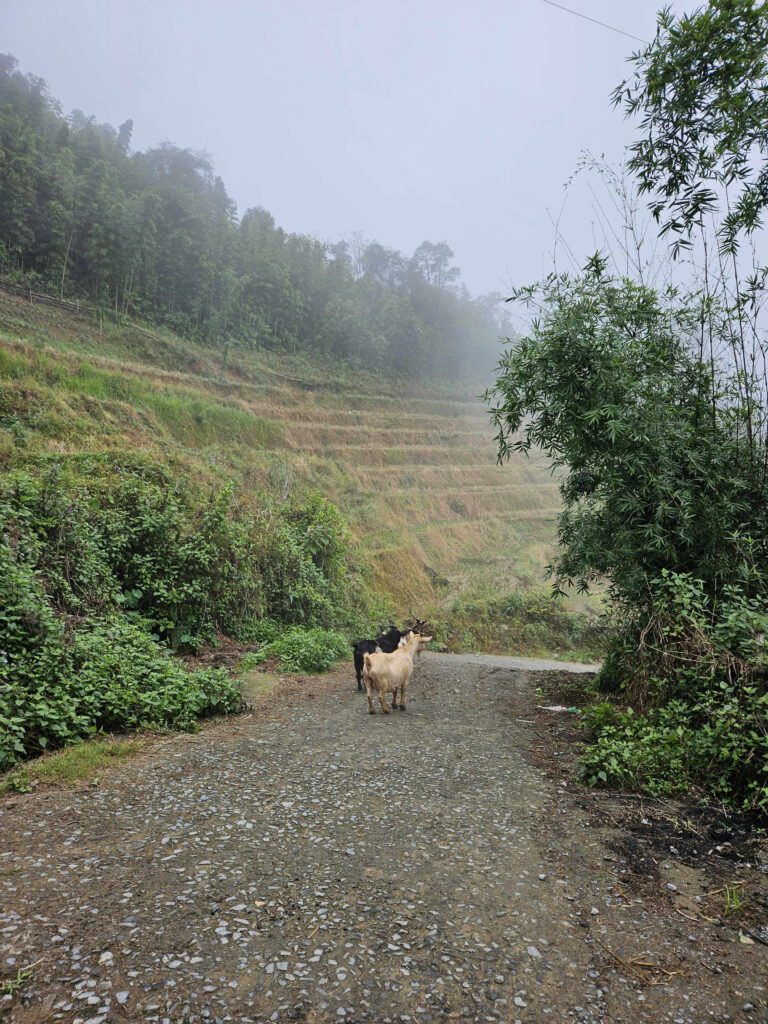
Trekking and sharing the path way with local farm animals
If you are with your group of friends and are adventurous, I’d recommend you skip the local trekking tour and explore the rice paddy treks with them. Don’t forget to download the AllTrails app before you start your trek! However, if you’d like to err on the side of caution, go for a paid trekking tour.
If you and your friends are keen to explore the local villages and have a couple extra days to spare, go for a 2 or 3-day trek into the village. There, you will be able to witness the way of life in the Hmong village, where the locals are constantly hard at work.
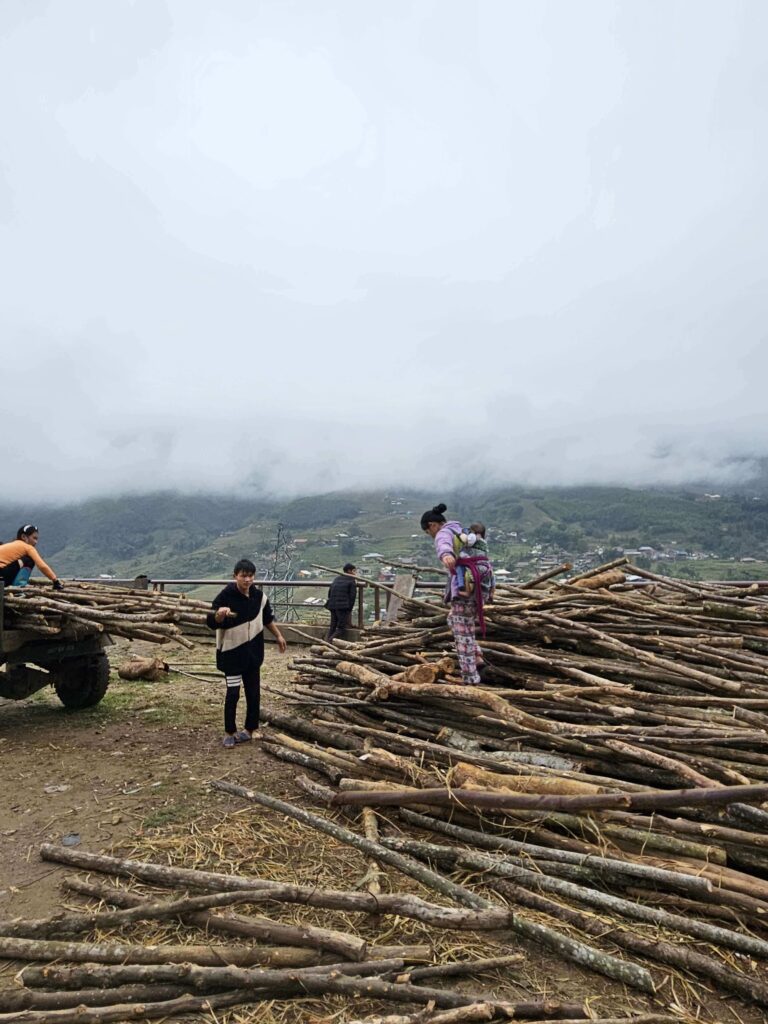
Local villages hard at work, including a lady carrying her young baby in a sling
As I was travelling with a group of friends, we explored the Sapa Bamboo trail and Sapa – Hau Thao route on two separate days. The Sapa Bamboo trail took us approximately 2 hours as the trails were incredibly muddy due to the rain the night before.
While the Sapa – Hau Thao route was mud-free, it took us slightly over 7 hours, including a nice lunch at the top of the rice terrace. I particularly liked this route as I was able to observe the locals making handicrafts. Throughout the 7 hours hike, my friends and I did not see any tourists at all!

Local handicrafts air-dried before being packed and sold
3. Head to Fansipan, the Roof of Indochina
Even before heading to Vietnam, making it to Fansipan is on my “must-do” list. Instagram photos did not do justice to the great view at the top!
Fansipan is the highest peak in Vietnam and Indochina. It stands tall at 3,143 m (10, 312 ft) above sea level. There are two ways to get to the top: 1) a 15-minute cable car ride; and 2) a 1-day hike.
Opt for the cable car if hiking is not your cup of tea. You can easily get tickets for the cable car online at the official Sunworld Fansipan website. A return ticket costs 800k VND (USD 30). The cable car station is located at Hoang Lien Station, 3km away from the Stone Church in the heart of Sapa town and is reachable by a short taxi ride.
I’d recommend you to time your return trip to Sapa town. Enjoy a cup of coffee/tea at Hai Cang Fansipan Restaurant while waiting for the sunset. Then, hop on a cable car ride down as the sun is setting and be awe in of the view!
As my newly made friends and I were looking for an adventure and an activity to push our limits, we opted to hike Mount Fansipan. Due to multiple reported incidents along the Fansipan trek, a guide is required. For a guide, completion certificate and a medal, each of us paid 1mil VND (USD 40). Blue skies and the cooling weather made the hike to Fansipan the best!
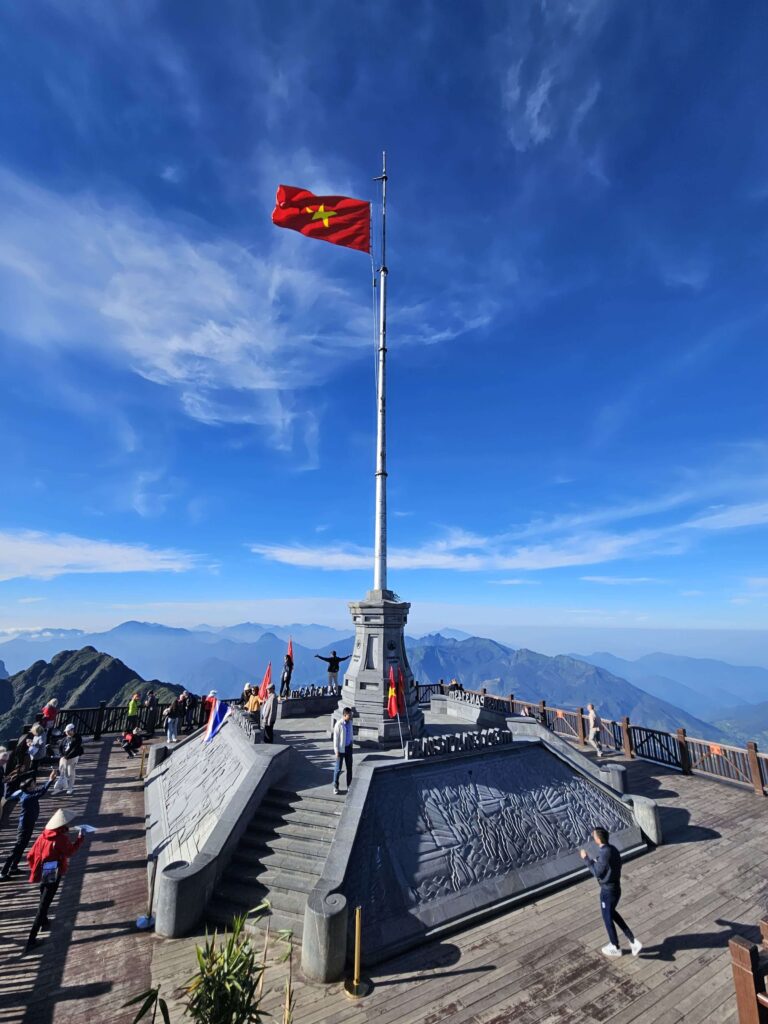
Clear, blue skies from the top of Fansipan
4. Relax and unwind on the balcony at your homestay
As it is easy to get away from the tourist crowd, I took the opportunity to enjoy the quiet in Ta Van, Sapa, Vietnam. The owner of the homestay was very welcoming, offering my friends and me hot tea as we arrived late in the evening in the rain.
My friends and I sat around the fireplace in the evening and enjoyed the view from the balcony during the day.
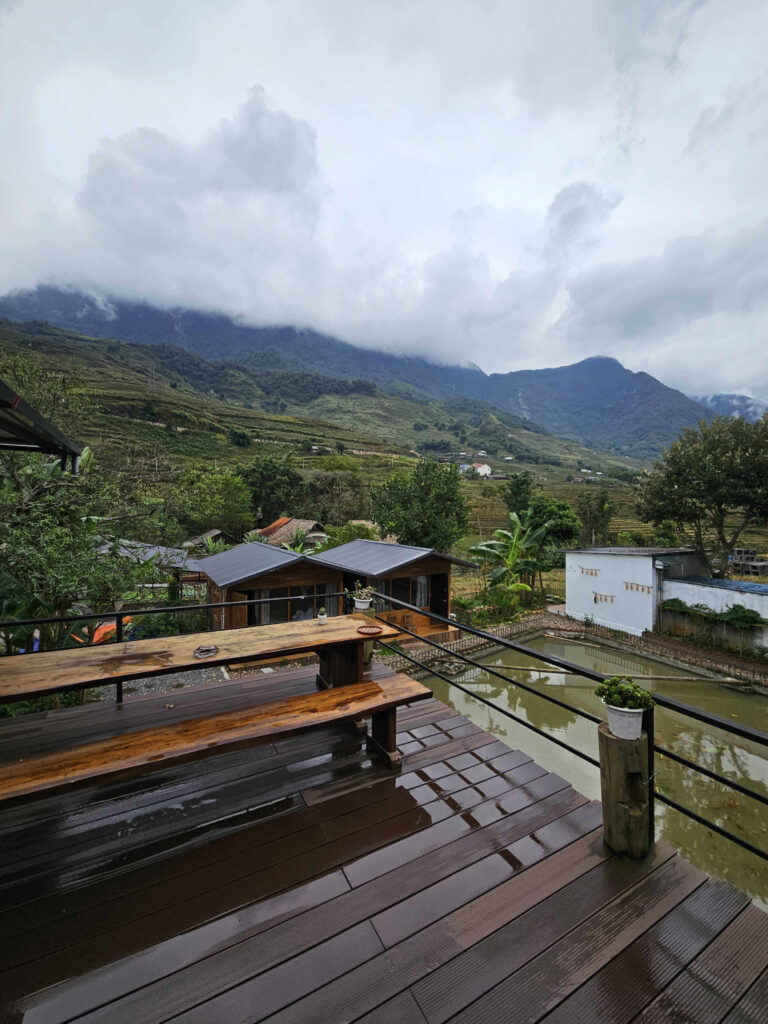
View from the balcony at the homestay I stayed for 3 nights as it was very cosy
5. Shop local handicraft
I enjoyed the quaint little shops in Ta Van, Sapa, Vietnam. As I walked along the pebbled roads and enjoyed the view of the rice paddy terraces, I shopped for local handmade handicrafts from the Hmong villages.
These handicrafts sold felt of better quality than the ones I saw in Sapa town. I particularly like their handmade designs as each drawing has a meaningful meaning. While I was tempted to put my bargaining skills to the test, I was mindful to not bargain too much as I am keen to support the livelihood of the locals.
Common local handicrafts include colorful fabric goods, carefully sewn with a traditional sewing machine.
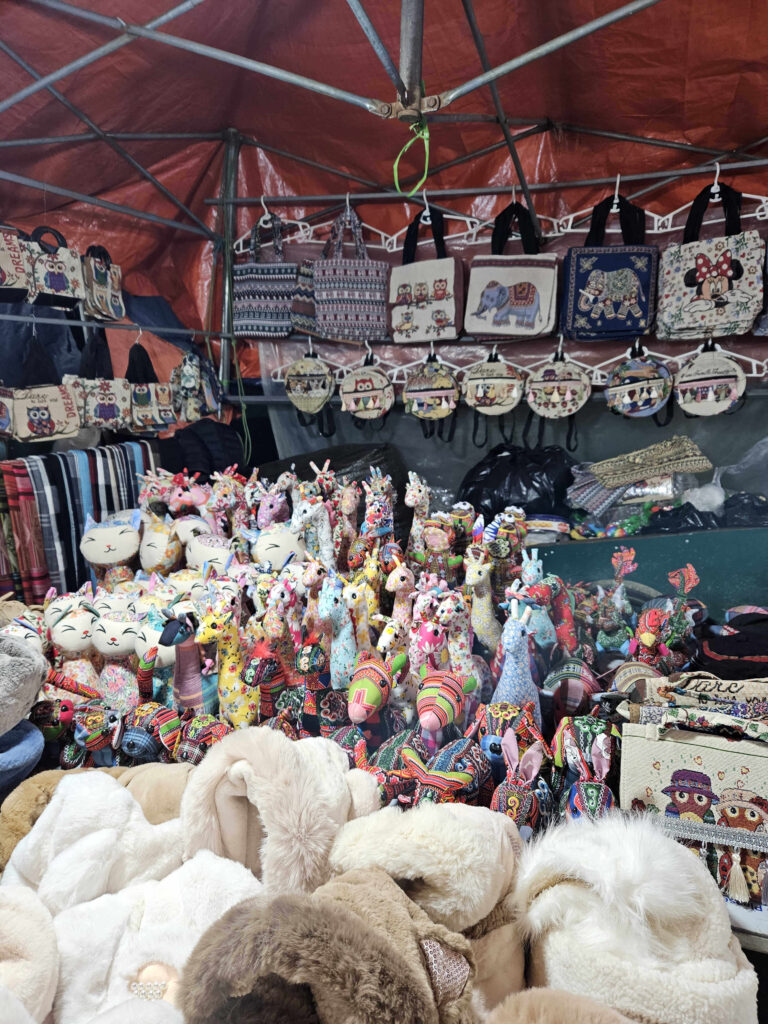
A variety of cute handmade handicraft to choose from!
6. Wander around at Sapa town and Sapa night market
Sapa town and Sapa night market are areas which are slightly more populated. Here, you are also able to shop for local handicrafts and enjoy street food at the local Sapa market.
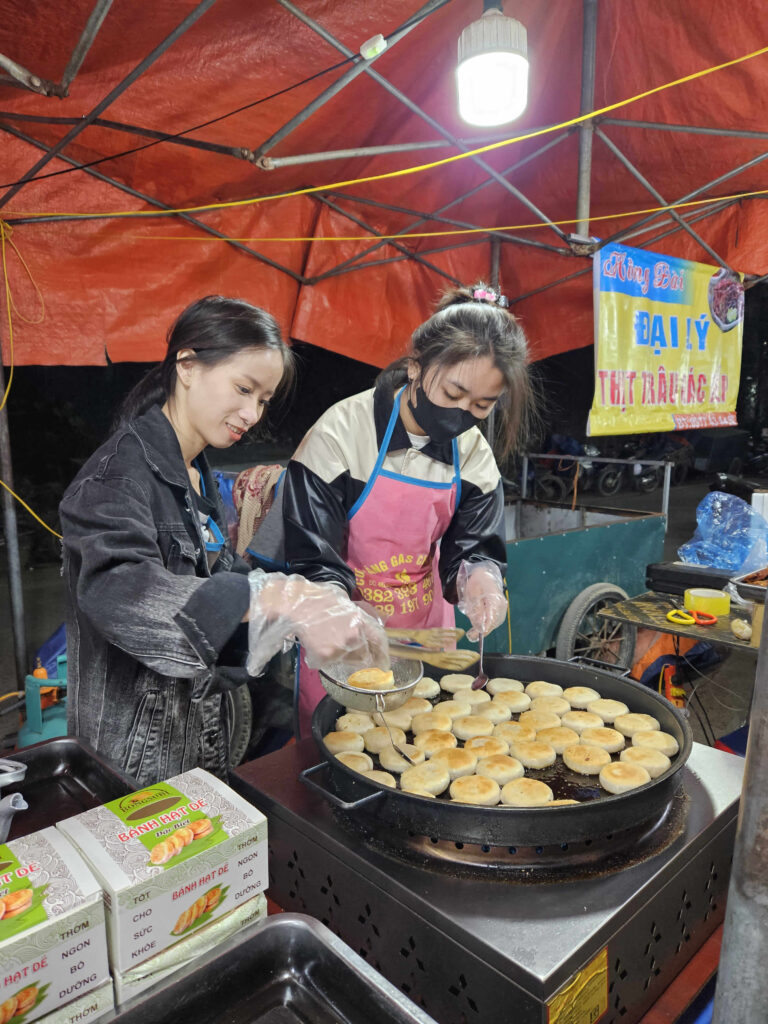
Local pancakes freshly made at the night market. It has green beans filling, which was absolutely deliciously
Restaurants are decorated with colourful lanterns and plants. There are also many massage parlours, which is a great reward for yourself after trekking through the rice terrace. A foot massage is definitely what you need and deserve!
Spend a day here to people-watch and get your bus ticket back to Hanoi!
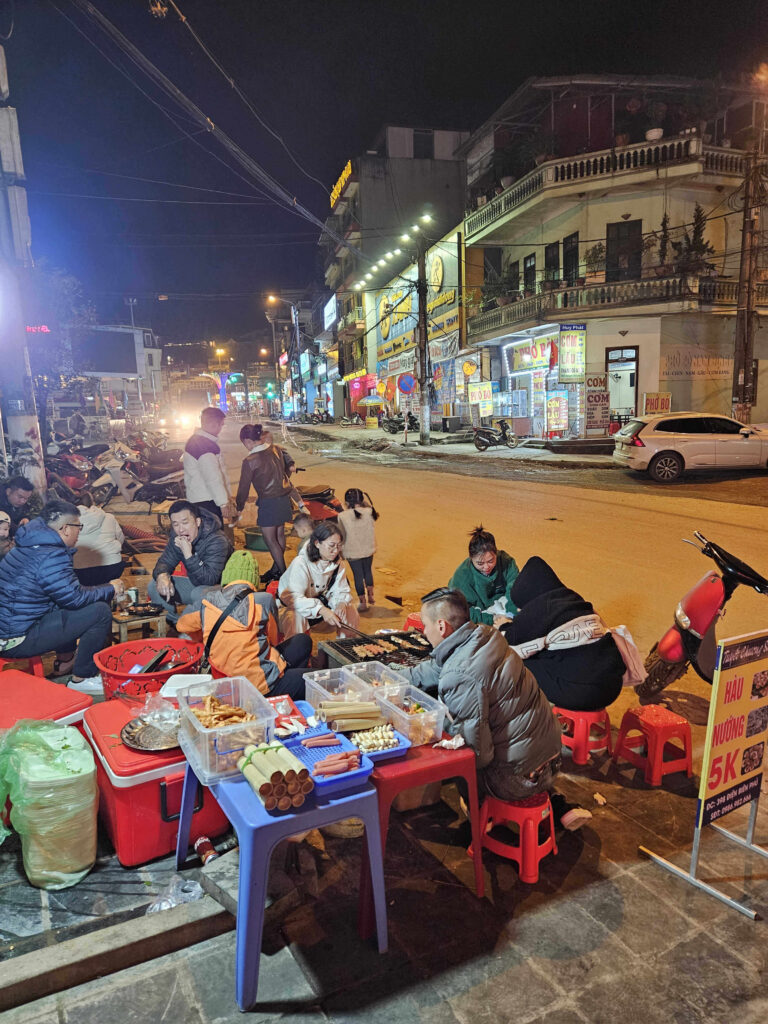
Local Vietnamese enjoying their barbeque dinner
Sapa, Vietnam Itinerary: What is ok to miss and the best alternative!
1. Cat Cat Village
Cat Cat village is one of the “villages” located 3km from Sapa town. I have left the word villages in inverted commas as it is not a village. Instead, in my opinion, it is a highly touristic village as it has been publicised as such on social media.
There are many great reviews online that suggest that Cat Cat Village is a must-go while you are there.
As I was in Sapa town for the day, I made my way to the village. At the entrance, there is an entrance fee which charged 150k VND (USD 5.80). Given the high price and large crowd at the entrance, I opted not to go for it.
For an authentic village experience, take a taxi ride to Ta Van. A one-way taxi ride costs 150k VND (USD 5.80) and you will witness a true Hmong village experience with no tourists in sight!
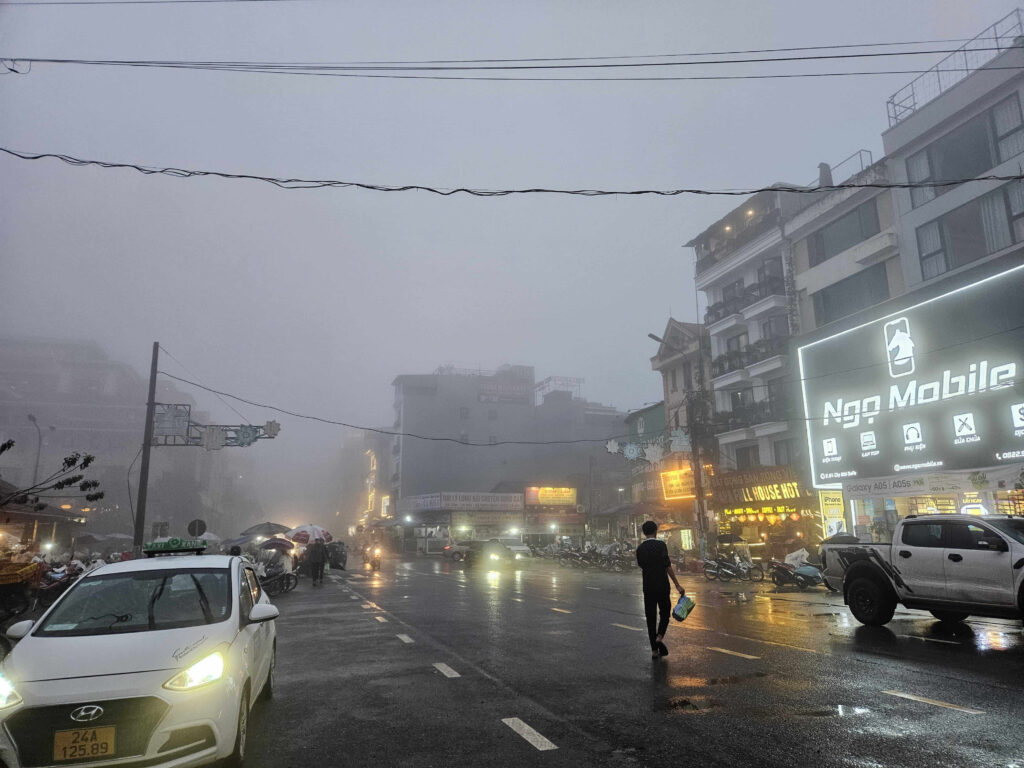
A foggy Sapa town before my friends and I hiked up Fansipan
2. Love Waterfall
Love Waterfall is located 14 km (8.7 miles) from Sapa town, which is close to the trailhead to Fansipan. Once at the entrance, it is a short 45-minute hike to the waterfall. The waterfall has a total height of 100m.
On the way to the Fansipan trailhead, I suggested to my guide to pop by the waterfall to enjoy the lush green track. However, he suggested giving that a miss as the views to the top of Fansipan are significantly better.
At the end of the Fansipan hike, my friend who went to Love Waterfall the day before also gave the same remark. He then suggested I check out the best waterfalls in Laos!
Sapa, Vietnam Itinerary: Where to stay in Sapa, Vietnam?
Oh, this is the golden question!
Choosing the best location to stay in Sapa, Vietnam depends on your Sapa, Vietnam itinerary and if you have rented a bike. This is because the 6 best attractions are located or start in Ta Van, while there are more food options in Sapa town.
Throughout my 5 days in Sapa, I’ve stayed in Sapa town for a night and 3 nights in Ta Van. If you are looking for a place to enjoy the local vibes of Sapa, I recommend you book a homestay in Ta Van, which also overlooks the rice paddy terraces. At Sapa town, I could hear the bikes honking from my hotel room at night.
Ta Van is a Hmong village located 9 km (5.6 miles) from Sapa town. There are numerous homestays to choose from, all reasonably priced. Homestay owners are more than happy for you to give you a slight discount if you stay for a long period. There is a decent number of restaurants and bars, serving local dishes and drinks, as well as shops selling local handicrafts. All of these are within walking distance of each other.
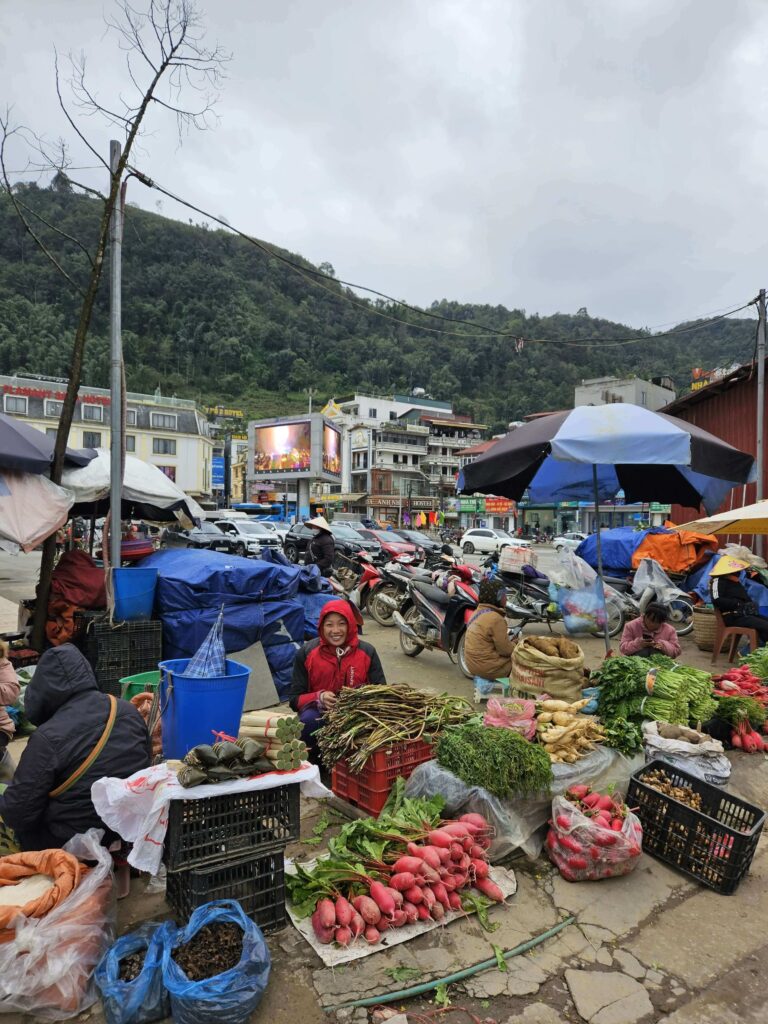
Local villages selling local produce at the market
Sapa, Vietnam Itinerary: What to bring to Sapa, Vietnam?
Apart from the usual packing list, pack these items:
- Fleece jacket
- Windbreaker
- Raincoat
- Shoes with good grips
- Cash
The weather in the region is quite unpredictable and temperatures may drop low. Throughout my 5 days in Sapa, Vietnam, I wore my fleece jacket and windbreaker as the temperature dropped to 9 degC (48 degF). I got away with the rain, so I didn’t need my raincoat.
Whether or not your trek through the rice paddy terrace is as short as an hour, you will thank yourself for trekking with shoes with good grip. During my trek on the Sapa bamboo trail, my friends and I were sliding through the treks, instead of walking as the path was incredibly muddy. We also had to make do with fallen bamboo to give us additional support.
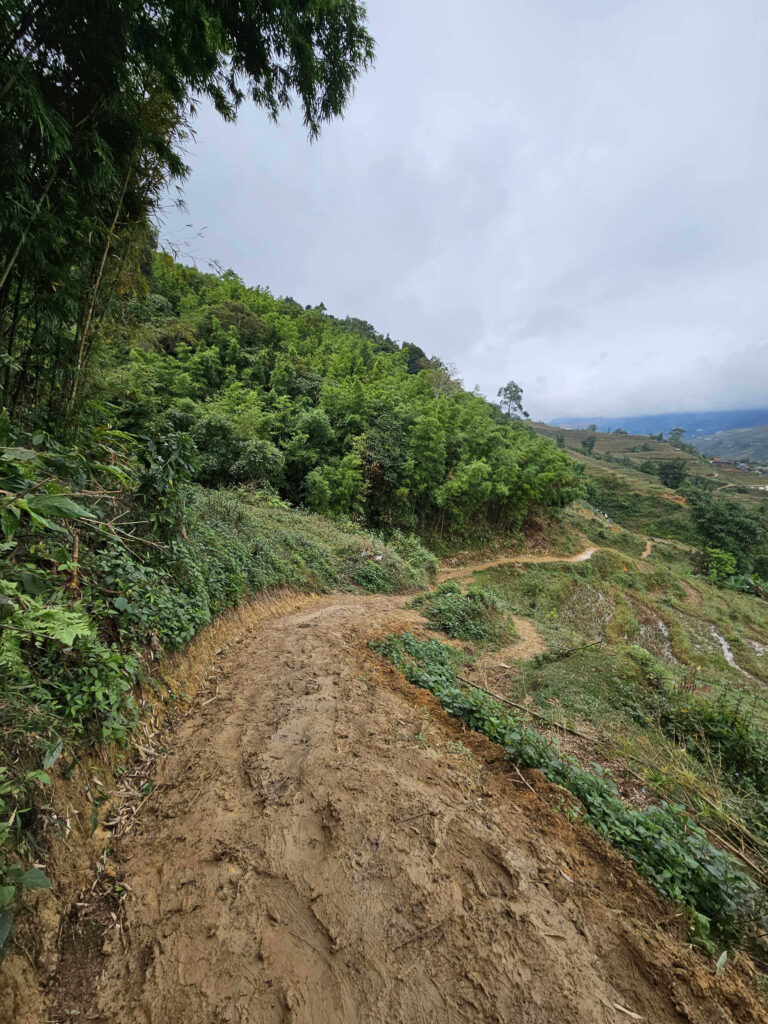
Muddy trekking paths on the bamboo trekking trail. I couldn’t walk and I was sliding!
Sapa, Vietnam Itinerary: Why did I stay 5 days?
As you read through the best Sapa, Vietnam itinerary, you may be wondering why I opted to stay 5 days in Sapa, Vietnam. Here are the 3 reasons why:
1. To trek Mount Fansipan
Hiking Mount Fansipan is on my wishlist! As the weather on the first four days was foggy, my friends and I prioritised our safety and waited for the weather to clear up.
Also, we had the opinion that the view while hiking up Mount Fansipan is more worthwhile with clear, blue skies!
2. To trek the various rice paddy terraces
I enjoy being outdoors and am curious about the livelihood of Hmong villages. Thus, I opted to explore treks with my newly made friends.
3. To relax and take in the calm environment and cool weather
Coming from busy Singapore and Hanoi, I needed a break from the city. As soon as I arrived in Sapa, Vietnam, I sensed that it was the best place for me to rest before continuing my travel.
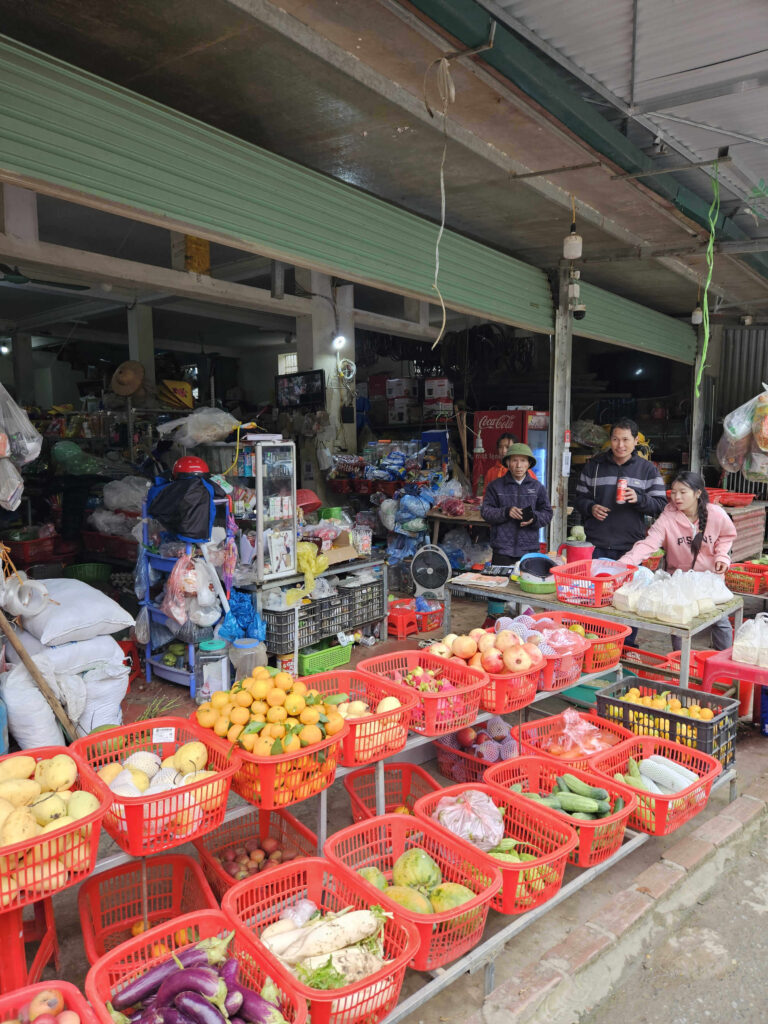
Local supermarket in Ta Van
Sapa, Vietnam Itinerary: Wrap up
There you have it, the best Sapa, Vietnam itinerary to follow. Pick and choose, depending on your time availability during your travel.
Especially for individuals who enjoy trekking and being outdoors in cool weather, Sapa, Vietnam is a great place to visit!
If you are keen to explore the mountainous region on wheels and not through trekking, explore the best views on the Ha Giang Loop map!
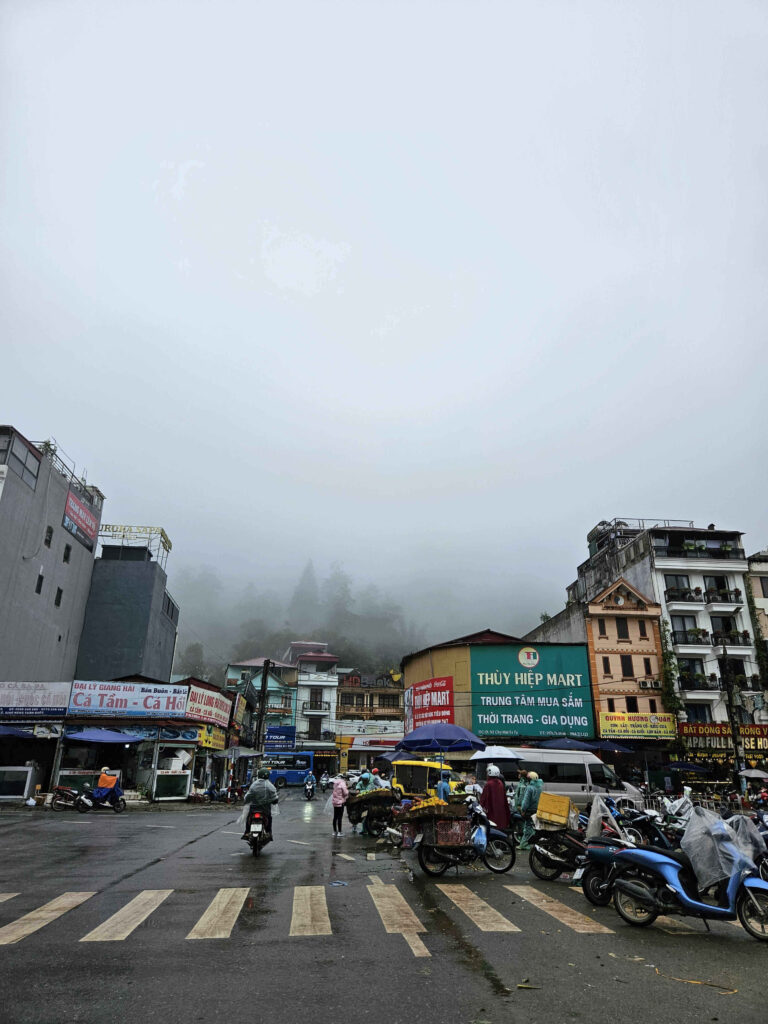
Sapa town covered in fog, which was great to practice slow travel!